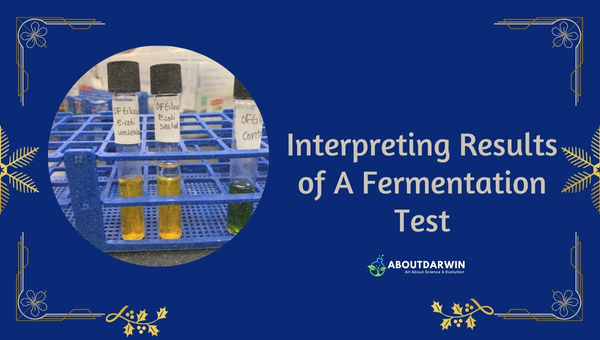Physical Address
304 North Cardinal St.
Dorchester Center, MA 02124
Ever wonder how bread rises or how yogurt gets its tangy flavor? Or perhaps you’re curious about how scientists can identify unknown bacteria in a clinical sample. The magic behind these comes down to one significant process: fermentation test.
Hidden within our food and our laboratories, this invisible yet critical process is responsible for so much of what we eat, drink, and discover within science.
I’m here to demystify the powerful tool used to study this transformative process known as the fermentation test. From its underlying principles to interpretation of results, I’ll walk you through everything you need to understand. So please sit back, relax, and let’s dive into this captivating world of science together!
Contents
When I first discovered the fermentation test, I was fascinated by its potential. The test has an intricate relationship with many things we encounter daily, such as bread or beer.

Essentially, a fermentation test examines how bacteria or yeast interact with sugars. It’s an elegant process that unearths some surprising nuances about these microscopic organisms and their behaviors.
At the core of any fermentation test is a fundamental biological principle – the metabolism of simple sugars by bacteria and yeast. This metabolic process results in various end products such as alcohol, lactate, acetate, or gases like carbon dioxide.
Fermentation tests detect these varied products to understand which sugar has been metabolized and consequently identify different microorganisms. It’s incredible how even tiny microbes exhibit distinctive characteristics we can determine through these simple tests!
Also Read: Isostatic Rebound: Uncovering Post-glacial Rebound Process
The procedure of a Germination Test is stated below :
First off, prepare your setup – this usually includes inoculating a sugar broth medium with the microorganism variant you are testing.
Seal your prepared tube with an oil layer to create anaerobic conditions.
Incubate for 24-48 hours at around 35°C -37°C; this is usually optimum for microbial growth.
Observe any changes in color that indicate a reaction between end products and the pH indicator present in your medium.
Last but not least, check for gas production – if bubbles appear in Durham’s tube inside your broth, it’s an unmistakable sign!
Here’s an example of a markdown table for ingredients used in the fermentation test procedure:
| Ingredients | Quantity | Purpose |
|---|---|---|
| Sugar broth medium | Varies on test requirement | Provides a growth environment for microbes and contains specific sugars for fermentation |
| Microorganism (bacteria/yeast) Sample | A few drops/additions during medium preparation | The sample being tested in interest, whether it be bacteria or yeast |
| pH Indicator (like phenol red) | A few drops/additions during medium preparation | Helps indicate changes in pH by color change due to the production of end products in fermentation |
| Oil | Enough to form an upper layer in tube. | Creates anaerobic conditions necessary for certain microorganisms and their metabolic pathways while ensuring no contamination takes place from outside sources |
This is a basic setup, but remember that protocol may vary depending on your specific needs!
Also Read: Sabouraud Dextrose Agar (SDA): Composition, Uses, and More
Fermentation tests are more widespread than you’d imagine, and their applications extend far beyond scientific investigation. They’re pivotal in food production, research, and medical diagnostics – each swinging the spotlight on a different but equally significant aspect.
It is widely used in the Food Industry :
It is widely used in Research :
It is widely used in Medical Applications :
Also Read: Sabouraud Dextrose Agar (SDA): Composition, Uses, and More
Interpreting the results of a fermentation test is like reading messages in a bottle from the microscopic world.

The color changes, gas bubbles, and different smells offer insight into their metabolic behavior.
Interpreting the results of a fermentation test might feel like learning a new language, but trust me – it gets easier with time. Positive results are often represented by changes in color or gas production in the broth medium.
Usually, once microorganisms metabolize the sugar in the medium, an acid is produced, which causes a color change—a clear indication that fermentation occurred!
However, if no visual changes occur after incubation, it points to a negative result. In other words, your little microorganism friends weren’t able to ferment the sugar.
This lack of activity usually retains the original color of the medium as there’s no acidic reaction to trigger a change! So remember, buddy—no change means “nope” when it comes to positive fermentation action!
Complications can arise while interpreting results; some common handlings are:
Also Read: Cetrimide Agar: Uncover Its Composition, Principle, and More
Precision is key in a fermentation test. Make sure you follow the exact volumes and temperatures advised for each step. It’s also crucial to maintain sterile conditions throughout the procedure to avoid contamination.
Fermentation tests provide consistent, repeatable results as long as they’re conducted properly. But remember, like any laboratory test, final confirmation usually involves cross-checking with additional testing methods.
The risks of conducting this experiment are minimal if you adhere strictly to safety guidelines such as wearing lab coats and gloves and using sealed containers for microbial cultures.
While it seems simple on paper, conducting a valid fermentation requires some training and understanding of microbiology principles. So it’s best left to those trained in these practices.
Also Read: Exploring TCBS Agar: Composition, Uses and Preparation
Decoding the science of fermentation tests exposes us to a beautiful blend of biology and practical application. It reminds us that even our daily bread or favorite drink involves sophisticated biochemical processes, and hints at the microscopic world’s vast diversity.
In conclusion, understanding fermentation tests illuminates not just scientific principles but also their value in diverse fields – from food production to medical diagnostics. So, next time you enjoy that slice of bread or sip your beer, remember the remarkable testing process behind it all!